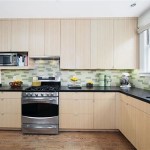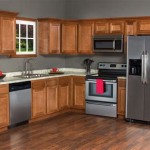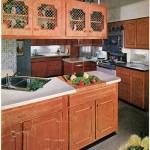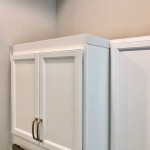Essential Aspects of Choosing the Best Paint for Varnished Kitchen Cabinets
Revamping varnished kitchen cabinets with a fresh coat of paint can breathe new life into your kitchen's aesthetic. However, selecting the appropriate paint type and following the correct preparation steps are crucial to achieve a durable and visually appealing finish.
Assessing the Existing Finish
Before you begin painting, it's essential to evaluate the existing varnish finish. If the varnish is intact and adheres well to the cabinet surface, a light sanding may suffice to create a suitable base for the new paint. Conversely, if the varnish is chipped, peeling, or has significant imperfections, it may need to be removed completely using a chemical stripper or heat gun.
Choosing the Right Paint: Oil-Based vs. Water-Based
The type of paint you choose will significantly impact the durability and appearance of your painted cabinets. Oil-based paints offer superior adhesion, toughness, and resistance to moisture and wear. However, they emit fumes during application and require a longer drying time. Water-based paints are more environmentally friendly, virtually odorless, and dry quickly. They provide a smooth and washable finish, but their durability may be slightly lower than oil-based paints.
Surface Preparation: Sanding and Priming
Thorough surface preparation is paramount to ensure the new paint adheres properly. Begin by lightly sanding the cabinet surfaces with fine-grit sandpaper to remove any imperfections and create a slightly roughened surface for the paint to grip. Wipe away any sanding dust and apply a coat of primer specifically designed for kitchen cabinets. Priming helps seal the surface, prevents stains from bleeding through, and improves paint adhesion.
Selecting the Paint Color and Finish
When selecting a paint color, consider the overall design style of your kitchen, as well as the existing countertops, backsplash, and flooring. Lighter colors can brighten and expand a small kitchen, while darker colors create a sophisticated and dramatic effect. You can choose from a wide range of finishes, such as matte, satin, semi-gloss, and high-gloss. Matte finishes conceal imperfections well, while high-gloss finishes provide a sleek and shiny look.
Applying the Paint
Use a high-quality brush or roller designed for painting kitchen cabinets. Apply the paint in thin, even strokes, ensuring you cover all surfaces thoroughly. Allow each coat to dry completely before applying additional layers. Apply two to three coats of paint for optimal coverage and durability. Let the final coat cure for at least a week before putting your cabinets back into everyday use.

How To Paint Kitchen Cabinets Without Sanding Or Priming

How To Paint Kitchen Cabinets Without Sanding Or Priming

The Best Way To Paint Kitchen Cabinets No Sanding Palette Muse

Refinish Kitchen Cabinets With Kilz Restoration Primer

Best Paint For Cabinets Oil Enamel Or Hybrid

How To Paint Laminate Cabinets Without Sanding The Palette Muse

How To Paint Kitchen Cabinets Without Sanding Sustain My Craft Habit

How To Paint Previously Varnished Kitchen Cabinets Ppc

Can You Paint Kitchen Cabinets Without Sanding

How To Paint Kitchen Cabinets Without Sanding The Budget Decorator
Related Posts








